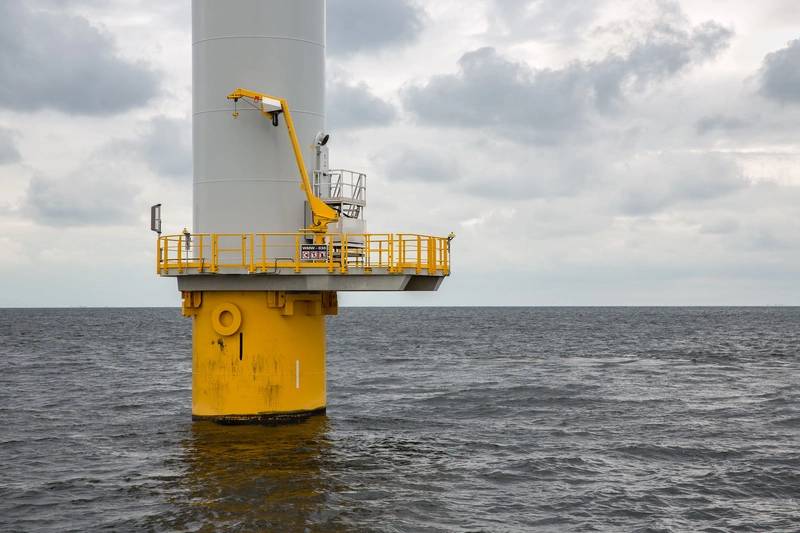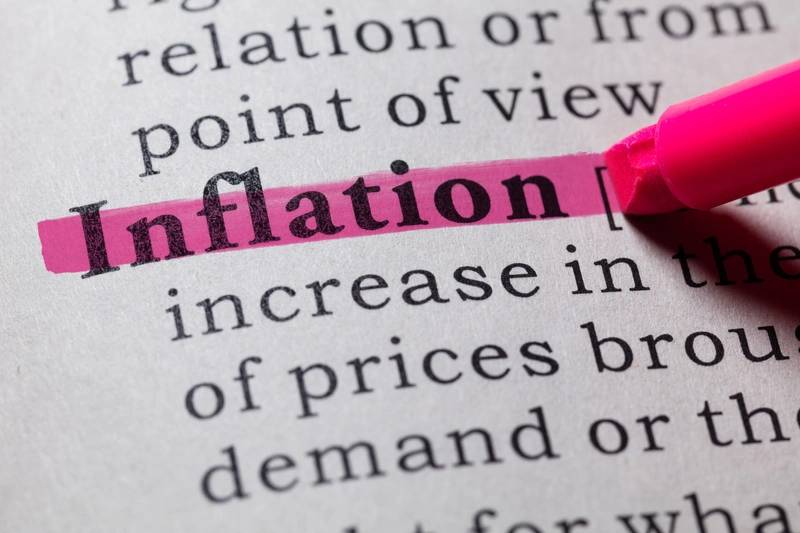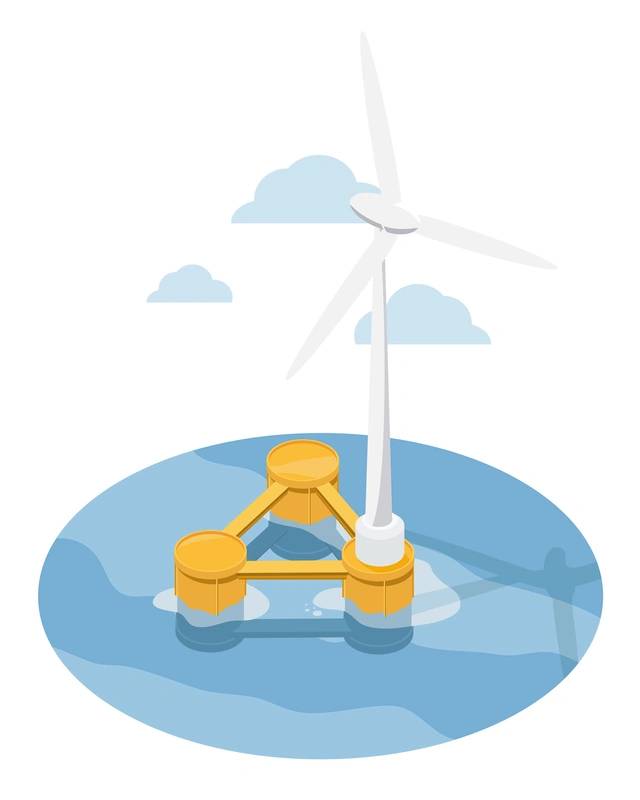
Despite short-term obstacles driven by high inflation and interest rates coupled with supply chain issues, we maintain that the foundations supporting long-term offshore wind activity remain solid. As we prepare for the new year, let us look at 10 factors that will shape the offshore wind sector in 2024.
1. A Continuously Dynamic Energy Trilemma
The dynamic relationship of the three key drivers of affordable energy, energy security and energy transition was clearly evident in 2023 as energy affordability and security were generally more prominent themes than the transition. 2024 will see a raft of elections within the European Union, and in the UK, the USA and Taiwan, all countries with large offshore wind programs. The speed of the energy transition and by extension offshore wind development depends, to some extent, on the outcome of these elections.
2. Solid Foundations
Despite the questions surrounding the speed of offshore wind development, the longer-term optimism for the supply chain is founded on declared offshore wind deployment targets by a growing number of countries amounting to more than 950 GW by 2050 (excluding China), driven by energy transition and energy security policies. From close to 75 GW installed at the end of 2023 to 220 GW commissioned by the end of 2030, we forecast global offshore wind capacity to rise to over 440 GW by 2035. Excluding the unique Chinese market, 2023 installed capacity is forecast to reach around 38 GW, rising to over 150 GW by 2030 and close to 350 GW by 2035. In all, outside of China, we anticipate that more than 21,000 offshore wind turbines will be installed globally between 2024 and 2035. Copyright Kruwt/AdobeStock
Copyright Kruwt/AdobeStock
3. Core Markets = Good Opportunity
There remains abundant contracted and planned project capacity to develop in the core UK, Europe (Germany, the Netherlands, France, Denmark, Poland, etc.), U.S., and Asian (Taiwan, South Korea and Japan) offshore wind markets.
4 .Potential in Australia and South America
Australia is seeking to identify developers for a number of multi-gigawatt sites, both bottom-fixed and floating, off Vicotria, New South Wales and Western Australia for commissioning in the next decade. In South America, Brazil and Columbia are the emerging markets, developing permitting frameworks and offshore wind opportunities. In addition to Australia and South America, we anticipate that new commercial-scale markets will emerge in the waters of Europe’s North Sea, Baltic, Mediterranean, and Atlantic.
 copyright Feng Yu/AdobeStock
copyright Feng Yu/AdobeStock
5. Inflation and High Interest Rates
In our 2023 preview prepared at the same time last year, we commented that, “Inflation and supply chain disruptions will result in delays and possibly cancellations.” 2023 has indeed seen the cancellation and delay of several large projects in key markets like the USA and the UK. However, we note the pragmatic actions taken by the various agencies involved in the procurement of offshore wind. Actions include increasing CfD pricing in the UK and allowing projects to rebid in offshore wind procurements at higher rates and/or inflation indexed pricing in the USA. These delays have been necessary to address some of the fundamental challenges in the offshore business model, notably that a race to the bottom in pricing terms is not sustainable for developers and the supply chain. The indications are that 2024 will see a stabilizing offshore wind market.
6. Chinese Supply Chain Expands Outside of China
Despite some high-profile resistance, Chinese foundation, electrical cable and wind turbine OEMs are increasing their presence in the Asian and European markets. As European and US offshore wind turbine OEMs weather some strong financial headwinds and concentrate on generating value from their existing turbine platforms, Chinese OEMs continue to develop ever larger wind turbines that meet the 20 MW and above planning aspirations of many European and US project developers. The Chinese OEMs present a new client opportunity for companies in the international supply chain.
7. Uncertainty over Bottom-Fixed Construction Vessel FIDs
As the requirement to install bottom-fixed turbines and foundations grows, we see a tightening on the supply of vessels capable of installing the largest monopiles and turbines. New vessels are under construction for delivery in the 2023-2026 window and several vessels have been upgraded. But will owners take vessel FIDs? We see relatively limited new building activity being agreed in the short-term until demand, day rates and contract terms give owners the confidence that a vessel investment will make the required return. The cable laying segments has seen some interesting ordering activity in 2023, with a handful vessels committed on the back of substantial contracts. Larger turbines, bigger substations and increasing transmission distances have changed the technical drivers for cable layers but we see similar challenges for cable layer owners as for foundation and turbine installers – demand, day rate stability and contract terms all need to align to a vessel owner’s expectations before FID. Copyright AllahFoto/AdobeStock
Copyright AllahFoto/AdobeStock
8. Commercial Floating Wind
Floating wind will account for slightly more that 0.5% of the global installed offshore wind capacity (excluding China) at the end of 2023. By 2030, floating wind share is forecast to rise to over 4% (around 6.5 GW) and over 18% by 2035. Activity is expected to be concentrated in South Korea, the UK, Norway and the USA, with a number of secondary markets in Europe and Asia. To reach these forecast numbers, much work is still required to develop the supply chain. Key areas of development and investment include rationalization of the number of substructure concepts, the industrialization of substructure production, assembly, marshalling and wet storage ports, mooring system component manufacture, installation vessel supply, dynamic subsea cable manufacture and major component repair and maintenance solutions.
9. The Availability of Finance
We have mentioned high interest rates, a factor in developers and companies in the supply chain reporting mixed financial results. One cannot ignore the high-profile headlines of investor and financial institution reactions to project cancellations, deferments and impairments by companies including Ørsted, Iberdrola and Vattenfall as well as losses at large turbine OEMs, including but not limited to, Siemens. As a result, we continue to monitor not only the cost of debt but the availability of finance to the offshore wind space. This point links to our earlier comment about government agencies accepting the necessary price and support increases as well as inflation indexation of rates to make projects bankable. 2024 is certainly an important year for project financing.
10. The year of Hydrogen?
Hydrogen is a key enabler for the energy transition. Offshore wind projects are ideally suited to powering electrolyzers that produce hydrogen. We anticipate that more wind farms will be developed to only power electrolyzers and will not be connected to utility power transmission grids. We see the potential not only in the European market, which is already developing such projects, but also within the USA, where the Gulf of Mexico leases lend themselves to supporting hydrogen production.
Despite some significant ongoing challenges within the industry, we maintain our position that offshore wind will be a growing element within the energy supply chain, complementing natural gas, nuclear and other renewable technologies. The world will continue to demand more energy, and this will come increasingly in the form of electrons … a trend that offshore wind will continue to support.
About the Authors



